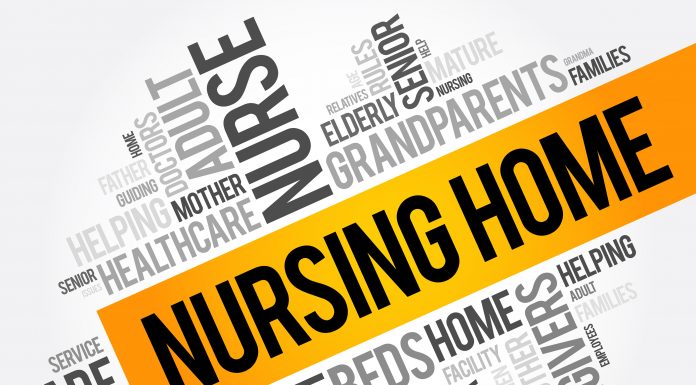There are aging-associated health conditions that start to appear over the years. Although it may not be much consolation, they’re part of the body’s natural progression. Some may come on suddenly, while others set in gradually as our body’s systems decline. Here are the most common aging-associated ailments and how you can prevent or address them.
Declining Eyesight
There are several reasons for declining eyesight. The most common ailment begins after 40 when a majority of adults start having trouble reading at close distances. The condition is known as presbyopia or aging eye and is a normal change in the eye’s ability to focus. A visit to an eye doctor for prescription glasses, contact lenses, or laser surgery can correct the issue. To slow the condition, avoid too much screen time, read using plenty of light, and get regular eye checkups after 40.
Cataracts are another aging-related eye condition. Progressive cloudiness slowly builds on the lens of your eyes. Most people don’t even realize how much their eyesight was affected by the gradual decline until after cataract surgery when the patient is surprised at the bright colors and details they lived without seeing so long. Besides age, some factors which increase the risk of cataracts include diabetes, high exposure to ultraviolet light, and smoking (or living in a smoking household).
Cardiovascular Disease
Cardiovascular disease is the leading cause of death in the United States. Our hearts and blood vessels change as we age, which can increase the likelihood of heart disease. Fat builds up in the artery walls over the years, causing coronary artery disease, a condition where the main arteries that supply the heart with blood narrow and become blocked by the fatty buildup. Heart disease can result in a sudden heart attack or decline a person’s health and quality of life over time.
A healthy diet is essential to reduce the risk of heart disease. Regular physical activity, like daily walks or exercising at least three or four times per week, keeps your heart strong. Regular checkups to monitor blood pressure and cholesterol levels can also reduce your chances of cardiovascular disease as you age.
Pneumonia
Everyone, old and young, gets sick. The problem as we age is that a simple cold or flu could develop into a respiratory condition or pneumonia. Older people are more likely to die from pneumonia. The American Thoracic Society reports that US seniors hospitalized for the lung condition have “a greater risk of death compared to any of the other top 10 reasons for hospitalization.”
Our immune systems weaken as we age, causing a cold or flu to have a harsher effect on our bodies. The best approach to minimize complications from the common cold or flu is to avoid getting sick in the first place. Flu vaccines, a healthy diet, and vitamin supplements can strengthen our immune system. Avoiding crowded areas during cold and flu season and frequently washing your hands will also reduce your risk of pneumonia.
Type 2 Diabetes
There are two types of diabetes. Type 1 was formerly known as juvenile diabetes because it affected the younger population. Type 2 diabetes is an aging-related disease. It was formerly known as adult-onset diabetes.
As our bodies age, our chances of developing diabetes increase. Type 2 diabetes may emerge as early as 45 years old. The disease causes high blood sugar and an insulin imbalance due to the body’s inability to process glucose as before.
The most common symptoms of Type 2 diabetes include fast weight loss and increased insatiable thirst. Ignoring the signs can lead to major complications like kidney failure, heart attack, and blindness. As with most age-related conditions and ailments, lifestyle changes like eating healthier and exercising regularly can make a difference.
Bone Conditions
Bones lose density over the years because of several factors. In women, menopause triggers the loss of bone density from changing hormone levels. Adults living an inactive lifestyle and not eating enough dairy or calcium-rich leafy greens are also most likely to suffer from bone conditions. Some of the most common age-related bone ailments include:
- Osteoarthritis: As joint cartilage breaks down you’ll feel pain and stiffness.
- Osteoporosis: Bones lose their density, becoming brittle and exposing you to a higher risk of fractures.
- Rheumatoid arthritis: A painful inflammation of the joints prevents you from fully moving the bones and joints in your hands, for example.
Your muscles and bones are related. If you don’t exercise enough, your muscles can’t properly support your bones and joints. If your bones deteriorate, you’re likely to experience muscle and joint pain. A calcium-rich diet and supplementation, as well as regular exercise, keep your bones strong longer.
How to Reduce Your Chances of Early-Onset Aging
Aging-related ailments may appear sooner, later, or not at all, depending on your genetic factors and lifestyle. The likelihood of developing the conditions mentioned can be reduced with preventative measures. It all starts with a healthier lifestyle.
Eating a nutritious, anti-inflammatory diet based primarily on organic fruits, vegetables, and grains is essential. Meats, seafood, and other proteins should come from the cleanest sources available. Avoid smoking, reduce alcohol consumption, or stick to wine for its heart benefits. And include regular physical activity as part of your daily routine. If you have physical limitations, yoga, gardening, walking, or swimming are more gentle forms of exercise. The key is consistency so that healthy choices are a habit. You can’t stop the aging process, but you can slow it down in its tracks.
























